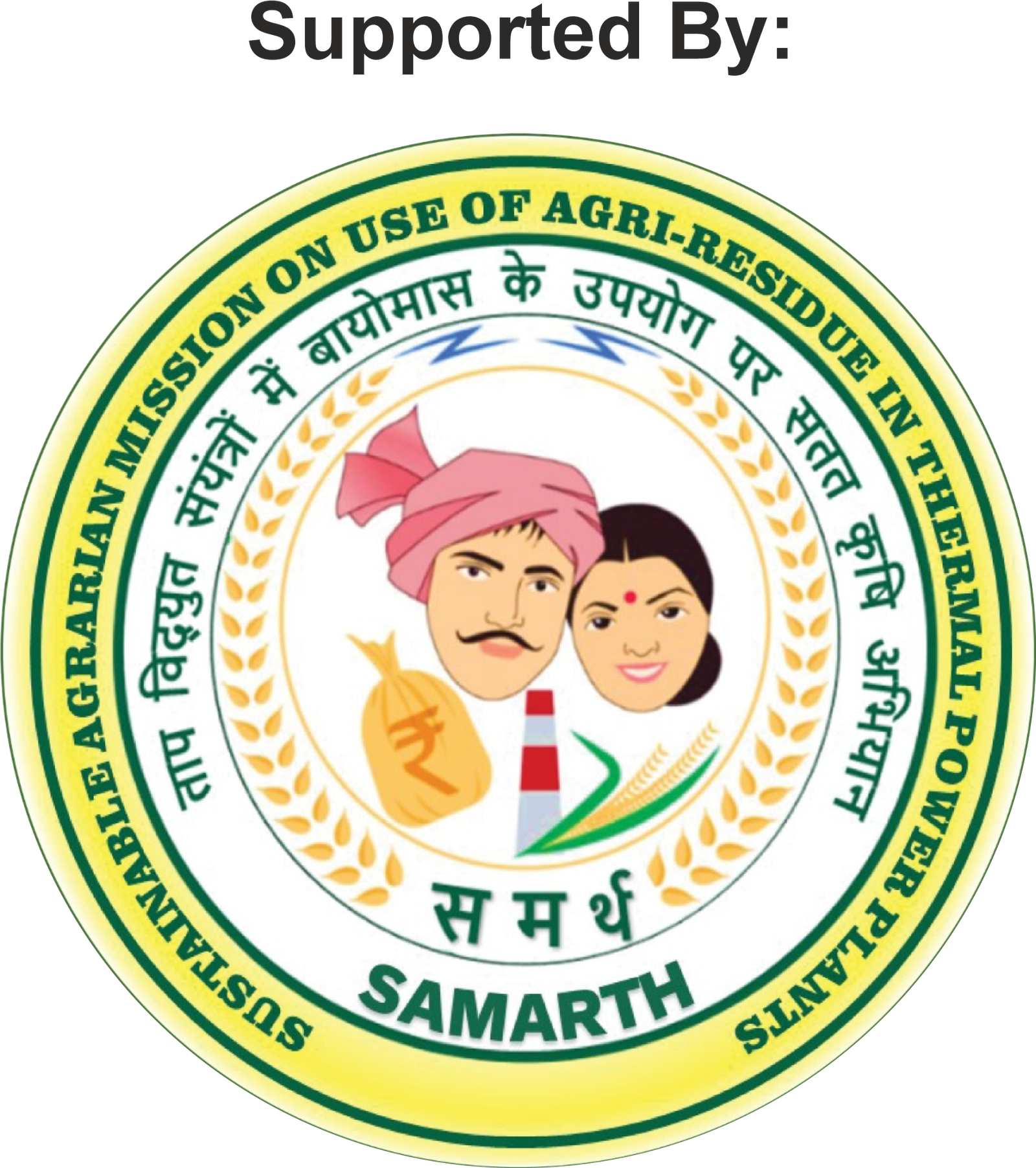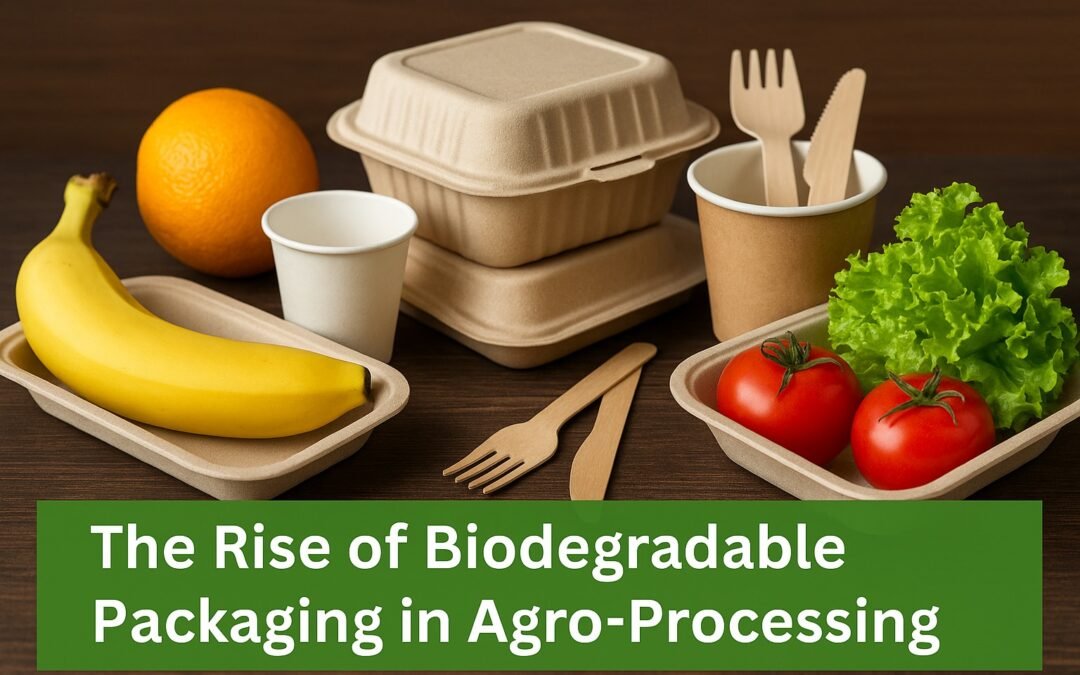Overview
The need for sustainable solutions has increased more than ever in recent years. Biodegradable packaging is at the vanguard of a dramatic shift in the agriculture industry, which has long been regarded as one of the most resource-intensive industries. Agro-processing facilities around the world are adopting green packaging options as the need to decrease plastic waste grows. This is done not only to comply with environmental rules but also to satisfy the changing tastes of environmentally conscious consumers.
India is a key player in this green transition because of its rural economy. Events like the Biofuel Expo 2025 India and the Bioenergy Global Exhibition 2025 are serving as catalysts for the convergence of industry cooperation, sustainability, and innovation. The emergence of biodegradable packaging in the agro-processing industry is a potent illustration of the exciting convergence of clean energy, waste valorization, and packaging innovations that these expos are showing.
This in-depth study examines the ways in which biodegradable packaging is changing the agro-processing scene, the function of the agricultural equipment sector, the factors influencing this change, and what lies ahead.
1: What is Biodegradable Packaging?
1.1 Characteristics and Definition
Materials that naturally break down in the environment owing to microbial activity and leave behind non-toxic residues are referred to as biodegradable packaging. Biodegradable plastics decompose in a matter of months to years, depending on the environment, in contrast to conventional plastic, which can last for hundreds of years.
Typical biodegradable materials are:
- Polylactic Acid (PLA), which is made from sugarcane or maize starch.
- Bagasse, a byproduct of processing sugarcane.
- Plastics made of starch
- Paper-based composite materials
- Cellulose derivatives and compostable sheets
These materials are becoming more and more popular in the food processing and packaging of agricultural products, as well as in the transportation and protection packaging of agricultural equipment.
2: An Overview of the Agro-Processing Industry
2.1 What is Agro-Processing?
The process of turning agricultural produce into industrial or consumable commodities is known as agro-processing.
This covers the following types of processing:
- Cereals and grains
- Meat and poultry
- Dairy
- Fruits and vegetables
- Sugarcane and bio-based products
In this industry, packaging is essential, particularly for ensuring branding, sanitation, and shelf life. Agro-processors are using biodegradable packaging as a sustainable substitute due to growing worries about plastic waste.
2.2 The Agro-Processing Economy of India
The agro-processing industry in India makes a substantial contribution to both employment and GDP. The agricultural equipment sector, which guarantees mechanized cultivation, harvesting, and post-harvest processing, provides significant support for it.
India leads the world in food exports, therefore overseas markets are putting a lot of pressure on the country to follow green packaging regulations. By highlighting environmentally friendly methods of processing food and fuel, events such as the Biofuel Expo 2025 India are anticipated to hasten this shift even further.
3: The Effects of Conventional Packaging on the Environment
3.1 The Crisis of Plastic Waste
Nearly 40% of plastic used worldwide is consumed by the packaging sector, making it the biggest consumer. Single-use plastics predominate in the agro-processing industry because of their affordability and robustness. But these substances present serious risks to the environment:
- Non-biodegradability
- Threats to animals
- Microplastics in soil and water
- Ocean pollution
3.2 Reaction from the Regulatory Body
Governments all throughout the world, including India, have implemented laws against single-use plastics and provided incentives for environmentally friendly packaging in an effort to address this challenge. This has made it possible for biodegradable packaging to be used at every level of the value chain for agro processing.
4: Factors Influencing the Adoption of Biodegradable Packaging
4.1 Knowledge of Consumers
Consumers of today expect sustainability. They are prepared to pay more for environmentally friendly options and choose goods with packaging that can be recycled or composted. In response, food manufacturers have begun incorporating biodegradable packaging into their processes.
4.2 Developments in Technology
By facilitating automation and accuracy in the processing of biodegradable materials, the agricultural equipment sector is advancing packaging technologies. Agro-units may now use biodegradable materials more effectively without compromising performance thanks to improved sealing, molding, and labeling capabilities.
4.3 Expos and Government Initiatives
The Indian government has started a number of programs to encourage sustainable packaging and biodegradable materials. Public-private cooperation in this field are anticipated to be further strengthened by the forthcoming Bioenergy Global Exhibition 2025.
5. Utilizing Biodegradable Packaging in Agro-Processing
5.1 Vegetables and Fruits
Biodegradable nets, bagasse trays, and banana leaves are becoming more and more common packaging options. These materials lessen the amount of plastic used in retail and shipping while preserving freshness.
5.2 Meat and Dairy Products
Compostable films and PLA containers are now utilized for meat, cheese, and milk. They adhere to food safety standards and preserve cold-chain compatibility.
5.3 Pulses and Cereals
Rice, wheat, and lentils are examples of dry goods that are packaged using paper and starch. These containers are biodegradable and breathable.
5.4 Processing of Sugarcane
One source of biodegradable packaging material is sugarcane bagasse. In order to promote circular economy models, a number of exhibitors at the Biofuel Expo 2025 India will display creative packaging made from byproducts of the sugar industry.
6: Difficulties and Restrictions
6.1 Price
At the moment, biodegradable packaging is 1.5–2 times more expensive than plastic. A major obstacle for small and medium-sized agro-processors is this.
6.2 Facilities
India currently lacks extensive infrastructure for recycling and composting, which causes even biodegradable trash to be improperly disposed of.
6.3 Strength and Shelf-Life
Particularly in tropical regions, several biodegradable materials fall short of plastic in terms of resilience to moisture and longevity.
7: The Agricultural Equipment Sector’s Function
7.1 Processing Line Integration
Biodegradable materials are being incorporated into automated filling, sealing, and packaging lines in the agricultural equipment sector. Nowadays, businesses provide specialized equipment for:
- Bagasse-based tray-forming
- Systems for bio-film wrapping
- Printing compostable labels
7.2 Solutions for Handling and Storing
New requirements accompany new materials. Transport, storage, and warehousing equipment is changing to prevent the early degradation of biodegradable packaging.
8: New Developments in Biodegradable Containers
8.1 Packaging for Edibles
packaging composed of milk proteins or seaweed that can be eaten with the product.
8.2 Ingenious Biodegradable Polymers
These films track temperature and spoiling in addition to decomposing.
8.3 Biopackaging Using Nanotechnology
Even in biodegradable forms, nanocoatings increase shelf life and enhance barrier qualities.
These will all be on exhibit at the Bioenergy Global Exhibition 2025, where top manufacturers and innovators will talk about and showcase their contributions to the revolution in sustainable packaging.
9: What’s Next
9.1 Certification and Standardization
Standardized labeling (such as “marine degradable” or “home compostable”) is necessary in India to guarantee compliance and transparency.
9.2 Private-Public Collaborations
In order to scale up, cooperation between governmental organizations, the agricultural equipment sector, and packaging producers will be essential.
9.3 Acceleration of Expo-Led Innovation
The Biofuel Expo 2025 India and the Bioenergy Global Exhibition 2025 will be important venues for:
- Knowledge sessions
- Investor meetings
- B2B networking
In the field of sustainable packaging, these expos are anticipated to close deals worth crores, spurring additional innovation.
Final Thought
Agro-processing must make the switch to biodegradable packaging; it is not merely a fad. Agro-industries must innovate or face obsolescence as the global supply chain is reshaped by consumer behavior, government laws, and climate change.
India is in a unique position to spearhead this green transformation because of its enormous agricultural production and burgeoning agricultural equipment sector. With the help of expos like the Biofuel expo 2025 India and the Bioenergy Global Exhibition 2025, the future of sustainable packaging is not only promising, but also biodegradable.




